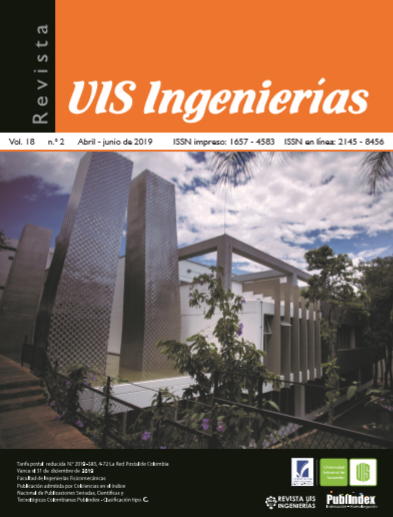Modal Identification of a box girder bridge using optimally selected measured data from ambient vibration testing
Published 2018-12-31
Keywords
- box girder bridge,
- ambient excitation testing,
- modal identification,
- optimum sensor location,
- ERA-OKID-OO method
How to Cite
Abstract
In Colombia, construction projects for fourth generation (4G) roads are currently being developed on a large scale. For topographical and economic reasons, bridges in this kind of projects tend to be increasingly long, with high intermediate supports, and located mainly in intermediate and high seismic hazard zones. This article presents the modal identification results obtained in the Gómez Ortiz bridge using data measurements collected from ambient excitation sources. This bridge corresponds to a box girder bridge type and is located on Girón-Zapatoca road, in the department of Santander, Colombia. In the present study, an optimal sensor localization algorithm and a modal identification method previously developed and applied in several modal identification studies of bridges of different configurations are implemented. The results displayed in this article using a limited number of sensors show good correlation with the results used in the calibration of the numerical model of the previously developed bridge and that corresponds to the baseline of the bridge.
Downloads
References
A. Viviescas, J. Carrillo y L. Vargas, “Línea base para el monitoreo de salud estructural del puente Gómez Ortiz a partir de pruebas de vibración ambiental,” Rev. INGE CUC, vol. 14, no. 1, pp. 52-65, 2018.
D. Kammer y L. Yao, “Enhancement of on orbit modal identification of large space structures trough sensor placement,” J. Sound and Vibration, vol. 171, no. 1, pp. 119-139, 1994. doi: 10.1006/jsvi.1994.1107
C. Riveros, E. García y J. Rivero, “A comparative study of sensor placement techniques for structural damage detection,” Revista EIA, vol. 10, pp. 23-37, 2013.
P. Pachón, et al. “E. Torroja’s bridge: tailored experimental setup for SHM of a historial bridge with a reduced number of sensors,” Engineering Structures, vol. 162, pp. 11-21, 2018. doi: 10.1016/j.engstruct.2018.02.035
J. Juang y R. Pappa, “An eigensystem realization algorithm for modal parameter identification and model reduction,” J. Guid. Control Dyn., vol. 8, no. 5, pp. 620-627, 1985.
M. Chang y S. Pakzad, “Observer Kalman filter identification for output-only systems using interactive structural modal identification toolsuite,” J. Bridge Engineering, vol. 19, no. 5, pp. 04014002, 2014. doi: 10.1061/(ASCE)BE.1943-5592.0000530
J. Juang, “System realization using information matrix,” J. Guid. Control Dyn., vol. 20, no. 3, pp. 492-500, 1997.
Laura Vargas, “Propuesta de plan de monitoreo del comportamiento dinámico para la salud estructural del nuevo puente gómez ortiz en la vía Girón zapatoca”, trabajo de fin de maestría, Escuela de Ingeniería Civil, Universidad Industrial de Santander, 2016.
ARTemis, “ARTemis Enhanced Frequency Domain Decomposition, Structural Vibration Solution”, 2016. [En línea]. Disponible en: http://svibs.com
MIDAS Information Technology Co. Ltd., Midas User Manual, MIDAS Information Technology, Seongnam, South Korea, 2016.

